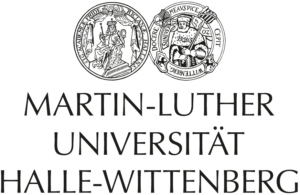Organization and interactions of eye-lens crystallins
by Malte Neudorf
and
Understanding the crystallization behaviors of different biodegradable polyesters
by Yu Qiang
chair: André
hybrid seminar: VSP1, 5.09 + zoom
date: April 26, 15.00
Organization and interactions of eye-lens crystallins
by Malte Neudorf
Crystallins are important in the eye lens to ensure our vision. In contrast to other proteins, they do not get degraded and replaced over time. The eye lens proteins have to remain stable and functional through the whole life. If this fails, cataract can occur. In order to understand cataract formation processes it is important to understand the function of each protein class (α,β,γ- crystallin) in their highly crowded environment in the eye lens. Furthermore, we want to understand how aging processes (eg. post-translational modifications), environmental stress (eg. UV damage) or mutations can change the functionalities and properties of crystallins. Since different protein classes are involved in cataract formation, we only focus on γD-crystallin which is one of the most abundant proteins in the eye lens. γD-crystallin can undergo liquid liquid phase separation (LLPS) with an upper critical solution temperature (UCST) behavior. This phenomenon occurs in the metastable regime of the phase diagram, out of this phase the protein can form crystals, aggregates or fibrils. In order to understand cataract formation, it has to be understood which interactions γD-crystallin has with itself and how the mechanism is of LLPS formation works.
The scientific questions are:
(I) Which parts of the protein are important and/or driving the phase separation process?
(II) Is the origin of the propensity of LLPS formation the same as for aggregation or fibrillation?
(III) Can we explain the impact of mutations on cataract formation with our knowledge?
To answer these questions we employ different biophysical techniques such as light scattering, SAXS and NMR spectroscopy.
Understanding the crystallization behaviors of different biodegradable polyesters
by Yu Qiang
From our previous studies, we know there are two types of semicrystalline polymers, crystal-fixed and crystal-mobile polymer. PE (polyethylene), most widely used commodity plastic, belongs to crystal mobile polymer, but its disposal causes significant environmental problem. Replacing commodity plastics by biodegradable polyesters is one of the solutions to minimize the impact of plastic waste on environment. Although biodegradable polyesters are promising material, the mechanical property is relatively poor, compared with commodity plastic, is still poor. Their crystallization behaviors, which largely influences the mechanical properties, are not extensively studied. In this study, we use SAXS (Small Angle X-ray Scattering) and NMR (Nuclear Magnetic Resonance) techniques to characterize 3 different biodegradable polyesters to understand if they are crystal-mobile or crystal-fixed polymer. The results show PLLA (Polylactic acid) and P3HB (Poly-3-hydroxybutyrate) do crystallize similarly to PE, as they are not typical crystal-fixed polymer. PBS (Poly butylene succinate) is a typical crystal fixed polymer. We would like to understand further if there is a chemical structure that could be critical to switch the polymer from crystal fixed polymer to crystal mobile polymer.




